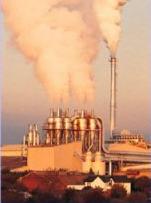|
RIMPUFF
RIMPUFF is a local-scale puff diffusion model developed by Risø DTU National Laboratory for Sustainable Energy, Denmark. It is an emergency response model to help emergency management organisations deal with chemical, biological and radiological releases to the atmosphere. RIMPUFF is in operational use in several European national emergency centres for preparedness and prediction of nuclear accidental releases (RODOS, EURANOS, ARGOS), chemical gas releases ( ARGOS), and for airborne Foot-and Mouth Disease virus spread Description RIMPUFF builds from parameterized formulas for puff diffusion, wet and dry deposition, and gamma dose radiation. Its range of application covers distances up to ~1000 km from the point of release. RIMPUFF calculates the instantaneous atmospheric dispersion taking i ...[...More Info...] [...Related Items...] OR: [Wikipedia] [Google] [Baidu] |
List Of Atmospheric Dispersion Models
Atmospheric dispersion models are computer programs that use mathematical algorithms to simulate how pollutants in the ambient atmosphere disperse and, in some cases, how they react in the atmosphere. US Environmental Protection Agency models Many of the dispersion models developed by or accepted for use by the U.S. Environmental Protection Agency (U.S. EPA) are accepted for use in many other countries as well. Those EPA models are grouped below into four categories. Preferred and recommended models * AERMOD – An atmospheric dispersion model based on atmospheric boundary layer turbulence structure and scaling concepts, including treatment of multiple ground-level and elevated point, area and volume sources. It handles flat or complex, rural or urban terrain and includes algorithms for building effects and plume penetration of inversions aloft. It uses Gaussian dispersion for stable atmospheric conditions (i.e., low turbulence) and non-Gaussian dispersion for unstable condi ... [...More Info...] [...Related Items...] OR: [Wikipedia] [Google] [Baidu] |
ARGOS DSS
ARGOS is a Decision Support System (DSS) for crisis and emergency management for incidents with chemical, biological, radiological, and nuclear ( CBRN) releases. System In case of incidents with chemical, biological, radiological or nuclear releases, ARGOS can be used to get an overview of the situation, create a prognosis of how the situation will evolve, and calculate the consequences of the incidents. The target is accidents, as well as terrorist initiated events related to CBRN industries, transports of hazardous materials, and others. ARGOS improves situation awareness, facilitates decision support, and information sharing among the emergency response organizations. As a simulation instrument, ARGOS is also valuable for training of response organizations, and for providing information to the public. The ARGOS system makes intensive use of geographic information system (GIS) to display data on geographic maps. Colours are used to express the concentration, contamination, ... [...More Info...] [...Related Items...] OR: [Wikipedia] [Google] [Baidu] |
Atmospheric Dispersion Modeling
Atmospheric dispersion modeling is the mathematical simulation of how air pollutants disperse in the ambient atmosphere. It is performed with computer programs that include algorithms to solve the mathematical equations that govern the pollutant dispersion. The dispersion models are used to estimate the downwind ambient concentration of air pollutants or toxins emitted from sources such as industrial plants, vehicular traffic or accidental chemical releases. They can also be used to predict future concentrations under specific scenarios (i.e. changes in emission sources). Therefore, they are the dominant type of model used in air quality policy making. They are most useful for pollutants that are dispersed over large distances and that may react in the atmosphere. For pollutants that have a very high spatio-temporal variability (i.e. have very steep distance to source decay such as black carbon) and for epidemiological studies statistical land-use regression models are also use ... [...More Info...] [...Related Items...] OR: [Wikipedia] [Google] [Baidu] |
UK Atmospheric Dispersion Modelling Liaison Committee
The Atmospheric Dispersion Modelling Liaison Committee (ADMLC) is composed of representatives from government departments, agencies (predominantly but not exclusively from the UK) and private consultancies. The ADMLC's main aim is to review current understanding of atmospheric dispersion and related phenomena for application primarily in the authorization or licensing of pollutant emissions to the atmosphere from industrial, commercial or institutional sites. The ADMLC is primarily concerned with atmospheric pollutant discharges from regulated emission sites and other fixed sources. Their review and study interests include routine discharges as well as accidental releases or releases cause by operational upsets. Their interests also include modelling dispersion at all scales from on-site short range (including dispersion modelling indoors) to long range distances. The ADMLC does not normally get involved with pollutant emissions from roadway traffic or other non-fixed sources. No ... [...More Info...] [...Related Items...] OR: [Wikipedia] [Google] [Baidu] |
UK Dispersion Modelling Bureau
__NOTOC__ This page is out of date and should be considered an historic reference only The UK Dispersion Modelling Bureau was part of the Met Office, the UK's national weather and meteorological service. The meteorologists in the bureau are among the UK's leading experts in areas such: * meteorology * air quality studies and forecasting * air pollution dispersion modelling * industrial emissions Consultancy services The bureau consisted of a team of air quality specialists dedicated to providing advice, support, and consultancy service to industry, government, local authorities and private consultants. The team had particular expertise with long and short range atmospheric pollution dispersion modelling using the NAME, AERMOD, ADMS, BOXURB and other dispersion models. The bureau's consultancy services included: * height assessments of industrial stacks discharging airborne pollutants * long-term environmental impact studies of airborne pollutant emissions * scenario modelli ... [...More Info...] [...Related Items...] OR: [Wikipedia] [Google] [Baidu] |

